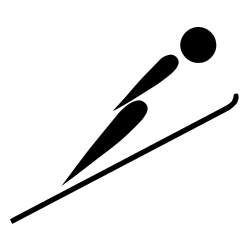| Four Hills Tournament | |||||||
|---|---|---|---|---|---|---|---|
 | |||||||
| Venues | Große Olympiaschanze, Schattenbergschanze, Bergiselschanze, Paul-Ausserleitner-Schanze | ||||||
| Location | Germany, Austria | ||||||
| Dates | 1 January 1953 – 11 January 1953 | ||||||
| Nations | 6 | ||||||
| Medalists | |||||||
| |||||||
The inaugural Four Hills tournament was held in January 1953. It was in planning since 1949, but in the post-war years German athletes were not allowed to compete internationally. The organizers were German and Austrian ski jumpers who knew each other from competing together for Germany under the Nazi regime
Contents
- Participating nations and athletes
- Results
- Garmisch-Partenkirchen
- Oberstorf
- Innsbruck
- Bischofshofen
- Final ranking
- References
- External links
At the time, ski jumping was an amateur sport and the winners were given material prizes like portable radios or cooking pots. [1]
The first competition was held on New Year's Day, making it the only Four Hills tournament that did not start in December, although the New Year's Day competition in Garmisch-Partenkirchen would eventually become traditional.
